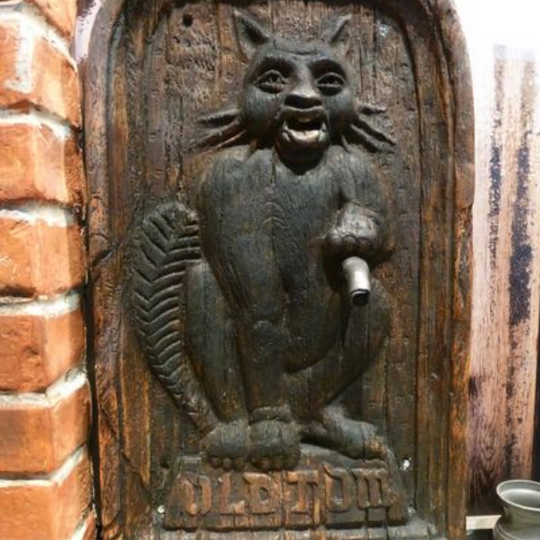We often get asked ‘but what is Old Tom gin?’ and if only that question was just as simple to answer. The history of Old Tom is equally long and interesting as it spans all the way back to the 1700s and is a spirit that has evolved in numerous ways along the years.
Generally considered a sweeter style of gin compared to a London Dry gin, Old Tom gin has had many lives throughout the history of gin, most notable being the ‘Gin Craze’ between 1720 and 1751. There is also a ‘Victorian Era’ style of the spirit which is what our version of Old Tom is most similar too, however it has our own special twist.
A drop of history
There are many theories as to why Old Tom Gin is named exactly that.
When William of Orange took the English throne in 1689, he encouraged the rise of British distillation and made it far easier to produce alcoholic spirits. This new law coupled with the taste for juniper flavoured spirits saw an increase in the production. Typically, they were made with low quality grain and then flavoured with natural sweeteners like liquorish root and rose water to make the gin more appealing. You wouldn’t enjoy these gins today, they were approximately 160 proof and without the invention of gin and tonics, it was being drunk neat(!) and as you can imagine, it was highly intoxicating.
By 1730, there were over 7,000 spirit shops in London alone and it was reported that gin was being distilled in 1 in 5 London homes. 6 years later, gin was being consumed with methanol in which was thought to have caused blindness, hence the term ‘blind drunk’ we still hear today and that’s why under the reign of George II in 1736, the Gin Act was introduced which restricted the sale of gin.
Old Tom became the general term for gin, but it evolved from there. One story is that that to prevent their illegal gin shops being discovered, shopkeepers took their stores underground and used the symbol of the black cat (or old tom cat) as a way of showing that they were an illegal distillery.
Another theory is about a man called Captain Dudley Bradstreet. He took advantage of a loophole in the Gin Act which meant he found a way to sell gin from one of his friend’s houses. According to his autobiography, we asked his friend to rent a house and then nailed a sign of a cat in the window that had a lead pipe hidden underneath. Passers-by would push coins through cat’s mouth and gin would then be poured out from the cat’s paw – all they had to do was bring a cup, or let it pour straight into their mouths! It is thought that Captain Bradstreet started a trend for what soon became known as the ‘Puss and Mew houses’.

(Image c/o: iceandaslice.co.uk)
Anyone for a Tom Collins?
As the popularity for Old Tom continued to increase and moved its way over the Atlantic, this saw the invention of the Tom Collins cocktail. In 1869, the traditional John Collins cocktail was adapted by the Steward and Barkeeper’s Manual using Old Tom Gin. The recipe was:
Teaspoonful of powdered sugar
The juice of half a lemon
A wine glass of Old Tom Gin
A bottle of plain soda
Shake up or stir up with ice
Add a slice of lemon peel to finish
It's thought that ‘Tom Collins’ also got his name from a joke going around New York and Philadelphia in the 1800s...
Bartenders would ask, “Have you seen Tom Collins?”, to which customers would reply “No, I don’t know him…”
“Well, you should find him, he’s been tarnishing your good reputation all over town.”
That would lead men ready for fisticuffs who would dive deep into the city asking everyone and anyone for ‘Tom Collins’, but there was just one problem; he simply didn’t exist. Instead, they’d be handed over a delicious gin cocktail in return for their troubles. How would we recommend serving it today?
- 60ml Slingsby Old Tom Gin
- 25ml Lemon Juice
- 15ml Agave or Honey
- 2 Dashes of Orange Bitters
Mix all these ingredients together and top with Soda Water. Garnished with lemon peel and a mint sprig.

Shop our award-winning Old Tom gin today for only £30... it's made using Yorkshire liquorice and it's an amazing tasting gin!


